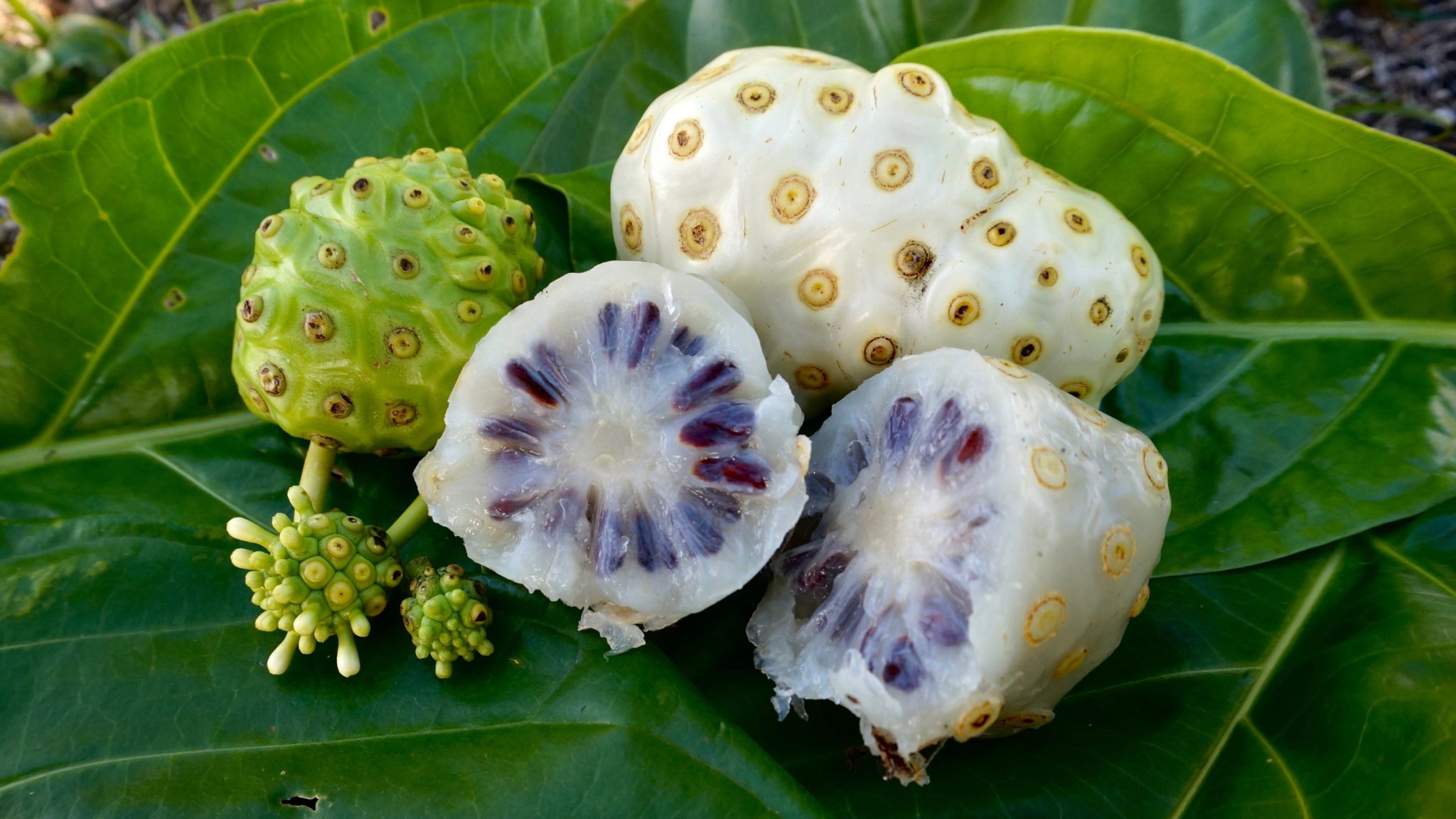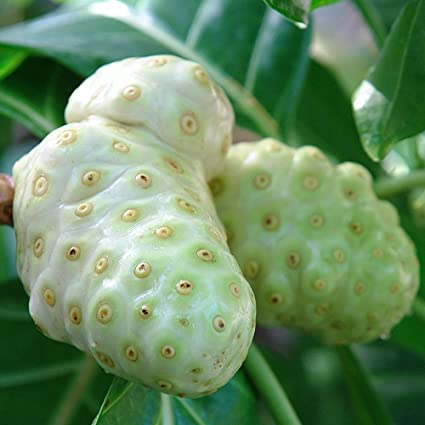Description
Noni is the Hawaiian name for the Morinda citrifolia plant, which is also called Great Morinda, Indian Mulberry, and Beach Mulberry. Noni grows as a shrub or small tree with glossy, deep green leaves and multiple blooms on flower stalks that become the Noni Fruit. Noni is used medicinally throughout the tropical world and is considered a treatment for enough ailments to fill several books on the subject. The self-fertile trees begin making fruit in as little as nine months, and can produce up to fifteen pounds of fruit per year.
Noni Trees are suited for growing outdoors in USDA Zones 9 to 11, or in pots within Zones 4 to 11. They like rich, moist soil and full sun. Although the Noni Plant is related to the Coffee Bush, Nonis can reach heights of thirty feet and widths of fifteen feet upon maturity. The many health claims surrounding Noni Fruit, Juice, and Noni Preparations have caused the price of Noni to rise. But the plants are easy to grow, seem to thrive when left alone, and their beautiful foliage and unique fruit make them a valuable addtion to the edible garden.
Noni Tree Care
Noni Trees like to be planted in full sun, with well-drained soil, and then simply left to do their growing and fruit making on their own. Some say the Noni Plants actually do best when neglected. They can survive light frost, but leaves and fruits will fall and the tree will recover in spring. If growing in colder zones it is best to plant Noni Trees in pots and bring them inside for the winter months.
Noni Trees do not need heavy feeding to grow and make fruit, but they will grow faster with some added nutrition. Fertilize the plants lightly two times per year using a time-released fertilizer such as 15-5-10. Apply half of the amount suggested for fruit trees according to the size of the Noni tree you are fertilizing. For example, if your Noni Tree is six feet tall, and the fertilizer suggest two cups of product for a six foot tall citrus tree, simply apply one cup and water in well.
Fruit & Harvesting
Noni Fruit is mainly grown and harvested for its many health benefits. The three to four-inch fruit contains multiple enzymes, minerals, and vitamins. It has a bitter taste and a strong, cheese-like scent. The fruit is traditionally eaten raw with salt, or cooked into stews and fish dishes. Modern uses include creating Noni Juice by straining the Noni pulp, removing the seeds, an adding other fruit juices for taste. Commercial Noni Juices are often fermented, which may or may not alter some of the health benefits associated with the Noni Plant. Therefore, growing and harvesting your own Noni, is one sure way to gain the benefits Noni has to offer.
Noni has many traditional uses. In Asia, the leaves and fruits are used to treat fevers, skin irritations, and stomach pain. In Malaysia Noni leaves are heated and applied externally to relieve coughs and nausea. In Hawaii, the fruit is not only eaten for health reasons, but a purple or brown dye made from Noni Tree Bark is used to dye clothing. Noni Trees are also planted in coffee growing regions as wind-break hedges to shelter the coffee plants.
Advice
Noni Trees are self-fertile and one tree will grow fruit. But growing several trees toghether will increase blooms and crops. Noni blooms emit a pungent scent and the flowers are often pollinated at night by moths and bats. The trees can tolerate salty conditions, so they are well-suited for growing on islands and coastlines where other fruits may suffer. Noni Trees can bloom and make fruit year-round, and one tree can grow several pounds of fruit each season.
Noni Trees should be planted in pots if the winter temperatures in the growing area consistently fall below 30ºF. Use sturdy pots with drainage holes and never allow the soil to remian soggy. Place potted Noni Trees in full sun for the spring, summer, and early fall, then move them indoors to a sunny window for winter. Turn indoor potted Noni Trees often to expose all sides to the brightest light possible. Be sure to water when the potted soil surface is dry to two inches deep.






What others are saying
There are no contributions yet.